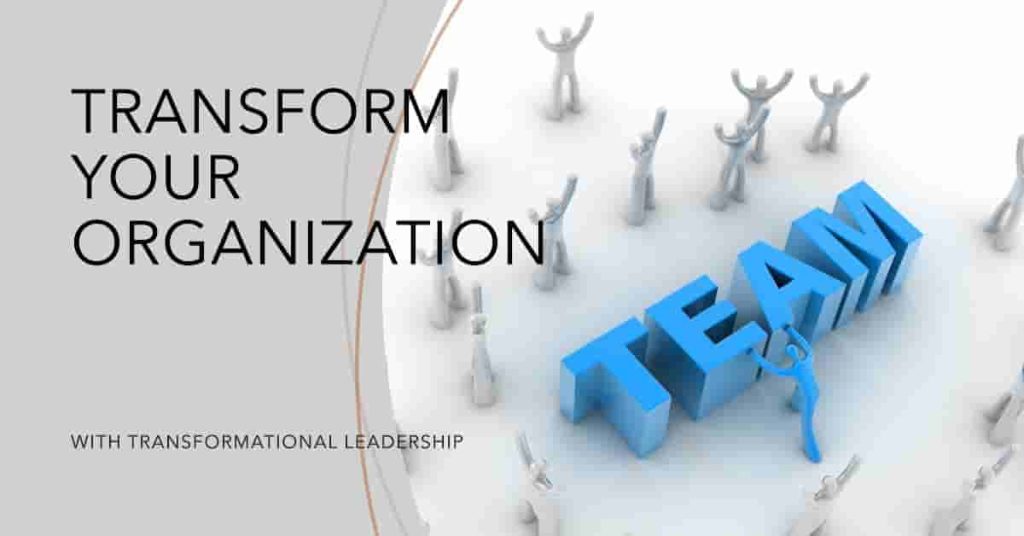
Transformational Leadership in a Mediocre Organization
Transformational Leadership Questions and Answers:
I am a civil servant in Nigeria. I have just been transferred to head one of our branches in another state. The work culture/value over there is largely mediocre and lackadaisical. Many of them come late to work. Some even skip days. I gathered from those who have been there over the years that that’s more or less a calcified attitude over the years. In my first week I asked the HR to serve some of them queries… but that seemed to make things worse, as they have resulted into a solidarity of sabotage.
How can I lead this sort of people into corporate efficiency and transformation?
Transforming a Mediocre Work Culture: A Guide for a New Leader
Navigating a work culture that is deeply entrenched in mediocrity and resistance to change can be challenging, but with the right approach, you can foster a shift towards greater efficiency and professionalism.
Leading a team that is entrenched in a culture of mediocrity and lackadaisical attitudes requires a strategic and empathetic approach. Remember, transforming a culture takes time and patience. By understanding the root causes, setting clear expectations, and fostering a positive work environment, you can gradually shift the mindset and behavior of your team towards greater efficiency and productivity. Carving out a strategic approach and focus on positive changes, you can foster a more productive and efficient work environment bearing in mind these four Transformational Leadership Core Features:
- Idealized influence
- Inspirational Motivation
- Intellectual Stimulation
- Individualized Consideration
Here are some strategies to consider:
1. Build Trust and Relationships
- Show Empathy: Demonstrate that you understand the challenges they face and are willing to work with them to create a better work environment. This will help in reducing resistance.
- Be Transparent: Communicate openly about your expectations and the reasons behind your decisions. Transparency will reduce fears and suspicions about your intentions.
2. Understand the Root Causes
- Conduct a thorough assessment: Talk to employees, review performance data, and analyze the work environment to identify the underlying reasons for the mediocre culture.
- Identify cultural barriers: Determine if there are any cultural factors that contribute to the lackadaisical attitude.
- Conduct a Listening Tour: Spend time talking to your team members, both individually and in groups. Understand their grievances, motivations, and the challenges they face. This will help you identify the root causes of the lackadaisical behavior and gain their trust.
- Identify Key Influencers: In every organization, there are informal leaders who have significant influence over their colleagues. Identify these individuals and work to bring them on board with your vision.
3. Establish a Clear Vision and Expectations
- Communicate your vision:Clearly articulate your expectations for performance, punctuality, and professionalism.
- Develop clear policies and procedures:Ensure that everyone understands the rules and consequences of non-compliance.
- Lead by example: Demonstrate the desired behavior through your own actions.
- Set Clear Goals: Define what success looks like for the branch. Establish clear, measurable goals for the team and individual employees. Make sure everyone understands the importance of these goals for the branch and the broader organization.
- Reinforce Organizational Values: Regularly communicate the values and standards expected in the workplace. Use team meetings, memos, and one-on-one conversations to reinforce these values.
4. Lead by Example
- Model the Behavior You Expect: Arrive early, be consistent, and show the work ethic you want to see in your team. Your actions will speak louder than your words.
- Be Visible and Accessible: Regularly engage with your team. Your presence will remind them of the standards you’ve set and your commitment to the transformation.
5. Foster Positive Team Spirit and Solidarity
- Encourage Collaboration: Break down silos and encourage teamwork. Organize team-building activities to strengthen relationships among employees.
- Address Grievances Quickly: Create channels where employees can express concerns or suggestions. Addressing issues promptly can prevent small problems from escalating.
6. Empower and Motivate - Provide Training and Support
- Recognize and reward performance: Acknowledge and reward employees who exceed expectations.
- Provide opportunities for growth: Offer training and development programs to help employees improve their skills.
- Foster a positive work environment: Create a supportive and inclusive atmosphere where employees feel valued and motivated.
- Offer Training:Provide training and resources to help employees develop the skills needed for their roles. This can address gaps and improve overall performance.
- Offer Support: Be available to provide guidance and support as employees adjust to new ways of working. Regular check-ins can help address any challenges they might face.
7. Encourage Participation and Ownership
- Involve the Team: Engage employees in discussions about changes. Solicit their input and feedback on how improvements can be made. Involvement can increase their commitment to the changes.
- Empower Staff: Delegate responsibilities and provide opportunities for staff to take ownership of projects. Empowerment can enhance motivation and accountability.
8. Implement Gradual Changes
- Start Small:Begin with incremental changes rather than sweeping reforms. Small, manageable improvements can build momentum and demonstrate the benefits of the new approach.
- Celebrate Wins:Acknowledge and celebrate small successes to boost morale and reinforce the value of the changes being implemented.
9. Address Resistance, Negative Behaviors, and Underperformance Constructively
- Use Progressive Discipline: Instead of starting with harsh measures like queries, use a progressive discipline approach that starts with verbal warnings and escalates as necessary. This gives employees a chance to improve while understanding that non-compliance will have consequences.
- Focus on Reformation, Not Punishment: Emphasize that the goal is to help everyone meet the new standards, not to punish them for past behavior.
- Address Underperformance Constructively
- Set Clear Expectations:Clearly define expectations and performance standards. Make sure everyone understands the criteria for success.
- Provide Feedback:Offer constructive feedback and support for improvement. Address issues in a timely manner and provide opportunities for employees to improve.
- Address Resistance
- Open communication: Encourage open dialogue and address concerns directly.
- Build trust: Demonstrate your commitment to the team and their well-being.
- Avoid confrontation: Use a collaborative approach to address resistance.
10. Monitoring, Evaluation & Communication of Progress and Adjusting based on findings:
- Track Performance: Regularly review attendance, punctuality, and productivity metrics. Use this data to guide further actions.
- Be Ready to Adjust Tactics: If certain strategies aren’t working, be flexible enough to try new approaches. Continuous improvement should be your mantra.
- Communicate Successes
- Celebrate Milestones: Publicly acknowledge improvements, even small ones. Celebrating successes will help build momentum.
- Share the Vision Regularly: Keep reinforcing the larger goal of transforming the branch into a model of efficiency and excellence.
11. Implement Recognition, Rewarding and Reinforcement of Improvement
- Celebrate successes:Recognize and celebrate team achievements, no matter how small.
- Focus on progress:Highlight the positive changes that are occurring.
- Create a culture of accountability:Hold employees accountable for their actions, but also provide support and guidance.
- Recognize and Reward Positive Behavior: Acknowledge and reward those who align with the new standards and show commitment to their work. This could be through formal recognition programs or simple verbal praise.
- Create Incentives: Introduce incentives for punctuality, attendance, and performance. This could range from certificates of recognition to tangible rewards.
- Encourage Collaboration:Foster a collaborative and supportive work environment. Encourage teamwork and open communication.
- Address Conflicts:Resolve conflicts promptly and fairly. A positive work environment is crucial for productivity and morale.
- Acknowledge Achievements:Recognize and reward employees who demonstrate improved performance and adherence to new standards. This can motivate others to follow suit.
12. Seek External Support
- Consult with HR units:Work closely with your HR department to develop strategies for addressing the cultural challenges.
- Consider external consultants:If needed, bring in outside experts to provide guidance and facilitate change.
By combining empathy with clear expectations, positive reinforcement, and consistent leadership, you can gradually transform the work culture in your new branch. The key is to be patient and persistent, recognizing that cultural change takes time.



